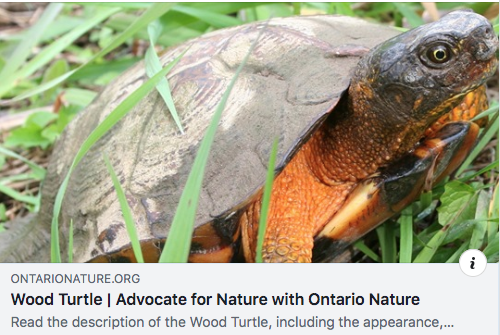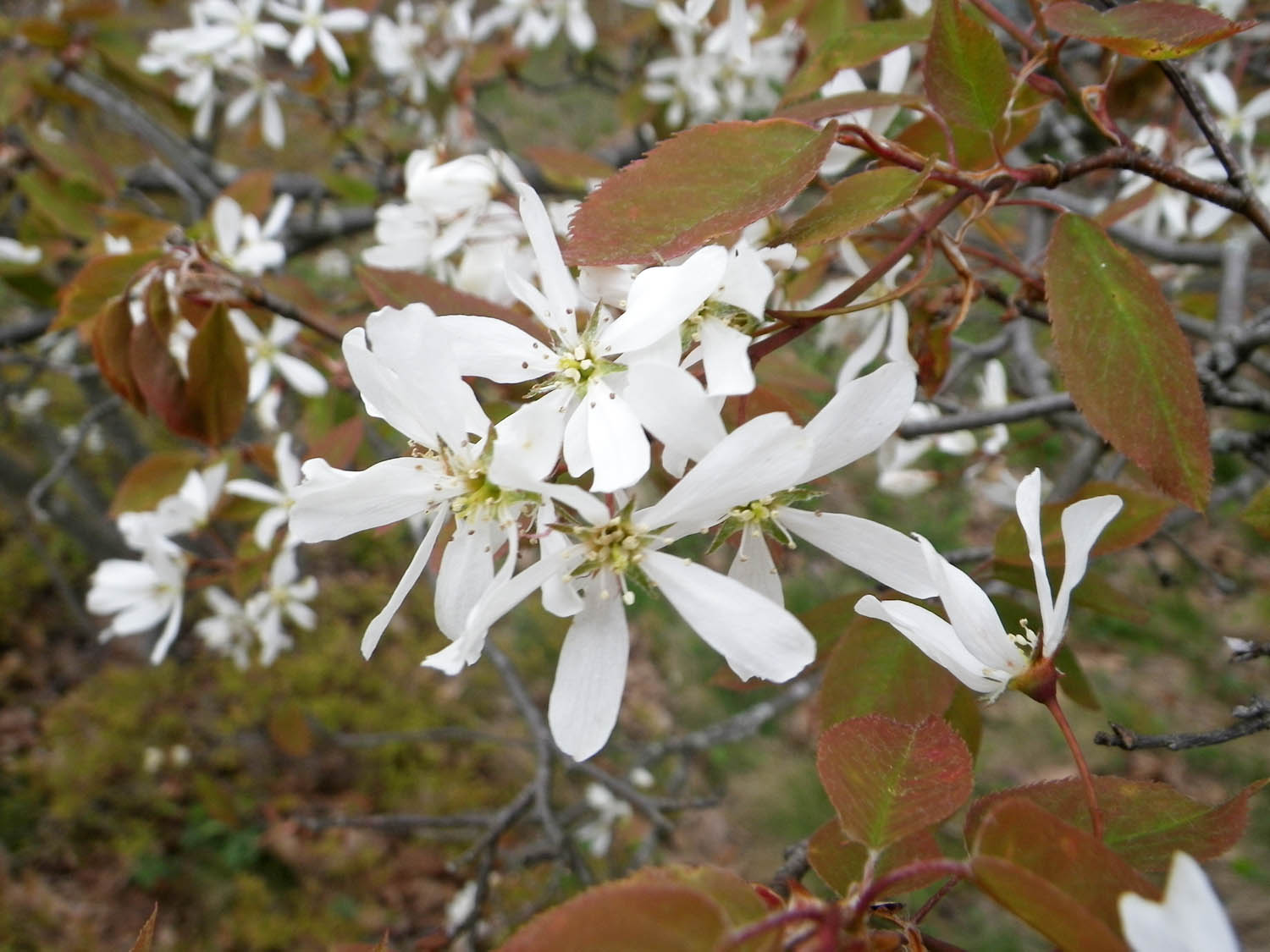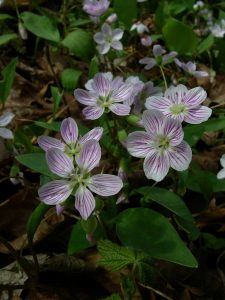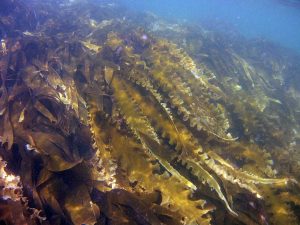 UPDATE May 22, 2019 evening – Positive news begets positive news. Prof David Garbary of StFX sent me this message:
UPDATE May 22, 2019 evening – Positive news begets positive news. Prof David Garbary of StFX sent me this message:
I just saw your recent Forest Notes contribution. Here is another positive bit of biodiversity news from the marine environment. I (with Carolyn Bird, Herb Vandermeulen and Beverly Hymes) just published a paper on macroalgal biodiversity of Brier Island (Proc. N.S. Inst. Sci). In the summer of 2017 we identified over 150 species from the island mostly associated with the metaphorical ‘forests’ of intertidal fucoids and kelp beds. This was slightly more species than a 1970 paper out of NRC for the whole of Digby Neck with collections over a whole year.
Thx David G.
——–
I wouldn’t have been aware that today is the The International Day For Biological Diversity, except for some posts by Bev Wigney on Annapolis Royal & Area – Environment & Ecology (a public Facebook group).
It’s a day we should really stop and celebrate what we have, amidst the otherwise almost endless bad news about climate, environment and biodiversity generally.
So to celebrate a bit, following are some articles of the last few days expressing mostly upbeat thoughts on the topic.
COMMENTARY: May 22 is international biodiversity day — and this scientist thinks change is possible
By Kai Chan, UBC Special to Global News, May 22, 2019 “…In a nutshell, success requires a global sustainable economy. For instance, our analysis suggested that national policies would likely need to move away from the current paradigm of economic growth. We would likely need more internationally consistent taxation, technologies and economic activities with net positive environmental effects and less income inequality. We would need to reduce consumption among the affluent and to cut waste, including by repurposing it as resources in a “circular economy.” We would need to overcome opposition from vested interests — including those in government.”
Increasing ecosystem carbon is good for species, says new study
GLORIA PALLARES on forestsnews.cifor.org, May 22, 2019. “The researcher hopes the study will open a path that others can tread and expand: “I really hope our study makes more people take both biodiversity and carbon into account when making decisions on land-use, rather than just blowing with the winds of markets.”
Celebrate The International Day For Biological Diversity With Micro Conservation
Dan Kraus National Conservation Biologist, Nature Conservancy of Canada, on the Huffington Post May 18, 2019
“There’s nothing like the potential loss of Earth’s rich biodiversity and planetary life support systems to make one feel, well, a little overwhelmed. Our individual actions can seem like small roles on a very big stage. But it’s important to remember that our current crisis of biodiversity loss didn’t result from one catastrophic event.”
Vice President calls for equitable and people-centred sustainable development
by Redazione22 Maggio 2019 on www.agenparl.eu May 22, 2019. “The Vice President of India, Shri M. Venkaiah Naidu has called for achieving sustainable development that is equitable and people-centred and stressed the need for efficient and frugal use of natural resources. Inaugurating the International Day for Biological Diversity (IDB) celebrations, in Chennai today, the Vice President said Biodiversity is fundamental to the survival of the human race and said that man must re-establish the link with nature, as did the ancients in India centuries ago, and take from earth and the environment only so much “as we can replenish”.
Bev Wigney on Two NS Turtles
Annapolis area naturalist Bev Wigney highlights two of Nova Scotia’s endangered turtle species for this International Day of Biodiversity. It’s on the Facebook public Group site for Annapolis Royal & Area – Environment & Ecology. I am reproducing parts of the posts here as the entire world is not yet on Facebook.
On BLANDINGS TURTLES
On this International Day of Biodiversity, I’m going to take this day to highlight two of Nova Scotia’s endangered turtle species. This first post is about the Blanding’s Turtle. There are several known populations in Nova Scotia, but there may be more. Please view the photos and info on this page which I have linked to – it’s from Ontario, but the photos and information are still entirely applicable to our province. If you should SEE a Blanding’s turtle — alive OR even dead — PLEASE take a photo and try to take a location of where you saw it. This information is vital to locating any new populations. Of particular interest to most of us here, is that the presence of Blanding’s turtles can help to *protect* an area from certain human activities (development, deforestation, etc..). Another point about these turtles is that they are both long-lived and also slow to mature — not reaching reproductive age until almost 20 years of age. Every turtle counts in helping this species to survive!! We are just heading into turtle nesting season, so turtles will be out and about, crossing roads, digging nests to lay eggs, basking in the sun along waterways. This is the PERFECT time to be watching for them. Let’s all make a point of watching for this species when we are out and about. If you see one, please contact either Mersey Tobeatic Research Institute, or Clean Annapolis River Project to report your sighting. You may also contact me and I would get that information reported.
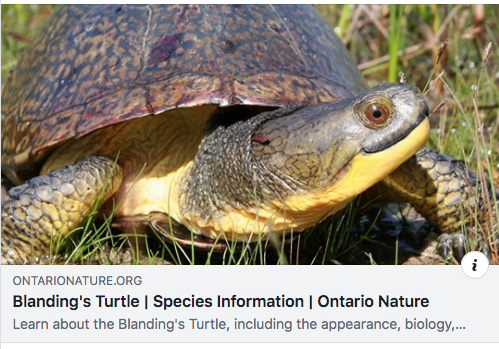
On WOOD TURTLES
On this International Day of Biodiversity, I’m going to take this day to highlight two of Nova Scotia’s endangered turtle species. This second post is about the Wood Turtle. There are several known populations in Nova Scotia, but there may be more. Please view the photos and info on this page which I have linked to – it’s from Ontario, but the photos and information are still entirely applicable to our province. If you should SEE a Wood Turtle — alive OR even dead — PLEASE take a photo and try to take a location of where you saw it. This information is vital to locating any new populations. Of particular interest to most of us here, is that the presence of Wood Turtles can help to *protect* an area from certain human activities (development, deforestation, etc..). These are very active turtles, often ranging quite far up streams, in woods, and on agricultural lands. Another point about these turtles is that, much like the Blanding’s Turtle, they are both long-lived and also slow to mature — not reaching reproductive age until almost 20 years of age. Every turtle counts in helping this species to survive!! We are just heading into turtle nesting season, so turtles will be out and about, crossing roads, digging nests to lay eggs, basking in the sun along waterways. This is the PERFECT time to be watching for them. Let’s all make a point of watching for this species when we are out and about. If you see one, please contact either Mersey Tobeatic Research Institute, or Clean Annapolis River Project to report your sighting. You may also contact me and I would get that information reported.
